Living Christmas Trees
Ever wish you could have a living tree to decorate for Christmas, then plant into the landscape to enjoy for years to come? Yeah – I have, too. But it’s not as easy as it sounds, and for more reasons than one. I know I’ll be asked many times again this year, so I thought I’d get ahead of the game and address it early.
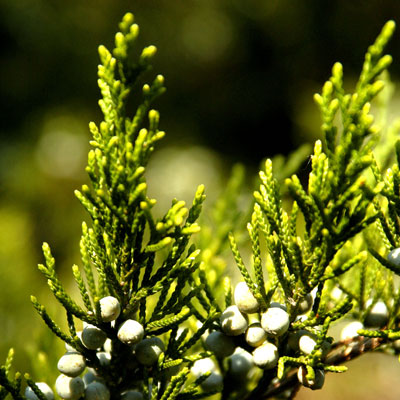
Photo: Eastern redcedar is native over the eastern half of Texas. Read on to see how good it would be as a living Christmas tree.
The challenges…
• Too dark indoors. These are outdoor plants, and we’re asking them to accept a tiny fraction of the light they’d be getting outdoors.
• Too dry. Humidities in our houses are very low. These plants aren’t used to that. Remember how your skin is dry, even cracked in the winter?
• Too warm. These are, for the most part, plants that have been sitting outside all fall as the temperatures worked their way downward (granted, slowly this year). They don’t handle “people” temperatures very well.
Research on the topic…
I remember a report from Texas A&M, probably from foresters, 30 or more years ago. It said that trees that were kept indoors more than one week were not likely to survive and thrive once they were put back outside. That was even if they were given the best possible care inside the house (proper watering, out of hot drafts, etc.).
Rating the choices…
A lot of your decision needs to rest on what trees are best suited to your locale. Texas is a really big state, so while you might do fairly well with a blue spruce in Amarillo, it wouldn’t stand a prayer in San Antonio, Houston or even, realistically speaking, in DFW.
Please read on, but do so very carefully….
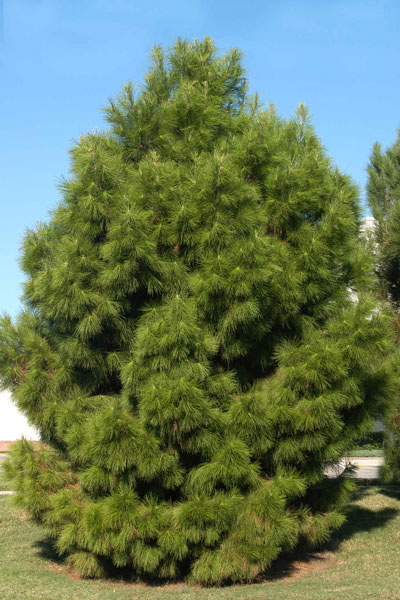
Eldarica pine
I hopped on the Eldarica pine bandwagon when they were introduced back in the 70s and early 80s, but they’ve gone off like grenades following wet years of 2007, 2015 and others. Diseases have caused them to wither and die, even in West Texas, unless they received perfect drainage. I cannot with a clear conscience recommend them, and I’ve seen other horticulturists make the same comments.
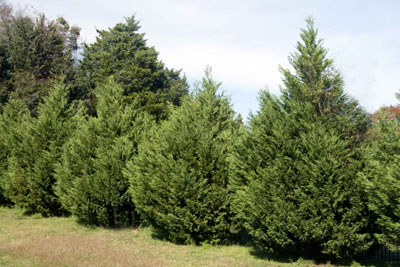
Leyland cypress foreground, with eastern redcedars behind
Leyland cypresses looked like the perfect match. They’re beautiful, dark green and soft textured. But again, diseases wiped out big percentages of them across Texas following the wet years.
Alberta spruces? Oh, please. Nice for a few months, but then summer arrives, and Texas and Alberta could not be less similar.
Norfolk Island pines are tropical plants. They are unable to withstand any freezing weather at all, so for most of us, that translates into their being houseplants. They’re glorious looking initially – deliciously tempting. But then you read that they grow 75 feet tall in their native homes, and you think about which room in your house will have full sunlight and a 75-foot ceiling. It won’t matter, because they’re going to get lanky-ugly long before they get even 8 feet tall. This is one of the dozen or so plants on my “never again” list. My heart’s been broken too many times.
My choices originally, and my choices now…
It’s one list. I’ve come pretty much full circle. If I wanted a living Christmas tree, I’d choose from one of these. Again, the final selection would depend on where I lived and what I needed in my landscape at the time.
• Juniper. It might be the prickly eastern redcedar or soft-textured (but erratically shaped) Hollywood twisted. It could be one of the many other conical selections. Junipers are well suited to Texas conditions.
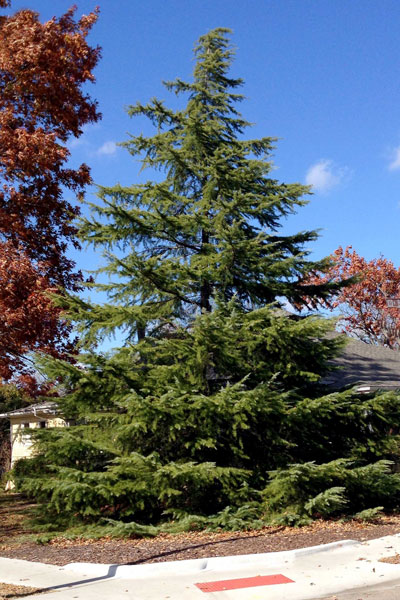
Deodar cedar
• Deodar cedar. This looks somewhat like a Colorado blue spruce, but it’s well suited to the southern half of the state. It does struggle with iron deficiency, so don’t plant it in shallow, highly alkaline conditions. (I’d still plant a juniper instead.)
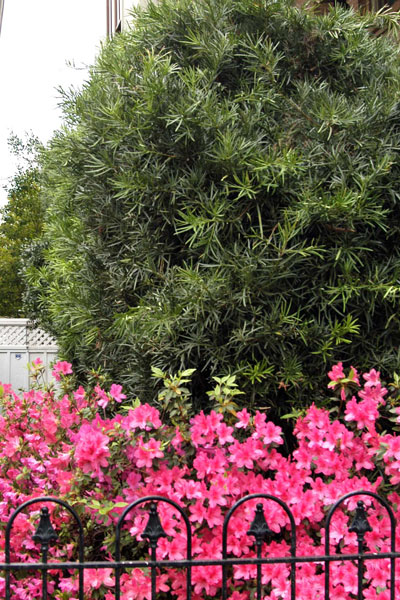
Azaleas with Japanese yew
• False Japanese yew (Podocarpus). This is a rather upright plant with flat leaf blades a quarter-inch wide and several inches long. It needs partial shade in hotter parts of the state, and it’s not dependably winter-hardy in the northern half. (I’d still plant a juniper instead.)
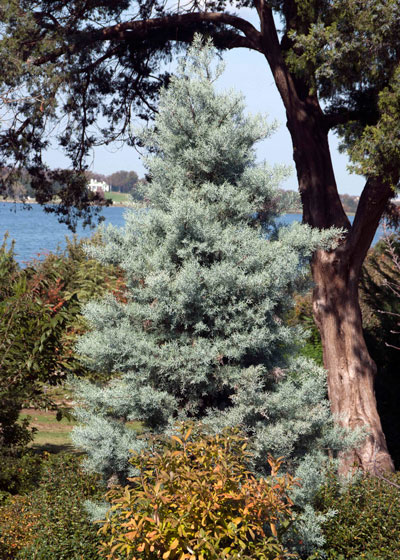
Arizona cypress – a blue selection
• Arizona cypress. OK. Now we have a tree that at least has a fighting chance. And if you get one of the intensely blue selections, you have a beauty. They’re softer-textured than most of the junipers, and they look a lot like a juniper. But they get kinda unsightly as they grow old. (Many of us do.) This would be one of my top choices.

Nellie R. Stevens holly
• Upright holly such as Nellie R. Stevens, Willowleaf or Oakland. You can find these trained into a conical form. And, if you hang around with me very long, you’ll soon find out that I’m in love with the hollies. But you have to think outside the lines if you choose one of these because they don’t look like your average Christmas tree.
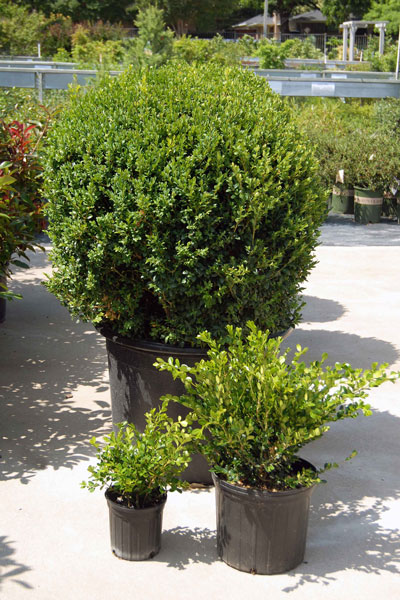
Boxwood in various sizes
• Boxwood. These can easily be sheared into Christmas tree form. Find a nice one this year and plant it into a decorative pot (drainage hole required). You can move it out onto the patio when Christmas has passed, keep it sheared, and reuse it for several years into the future. Protect it, however, if temperatures will drop into the low 20s.
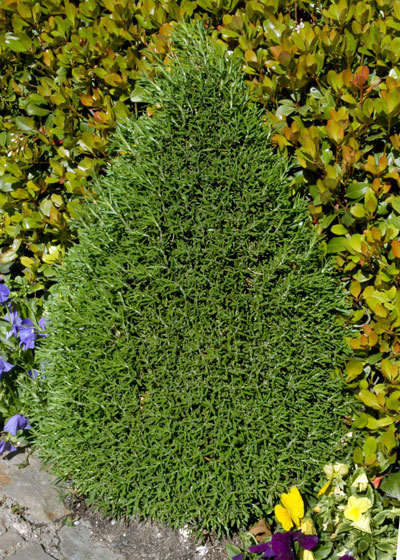
Rosemary
• Rosemary. You’ll see these sheared into small cones, and they, too, can be decorated and saved. Nice aroma as well, and you can pluck a few leaves for that fresh-from-the-garden flavoring for your Christmas dinner.
